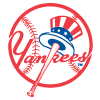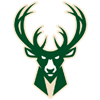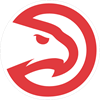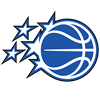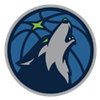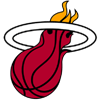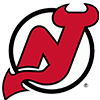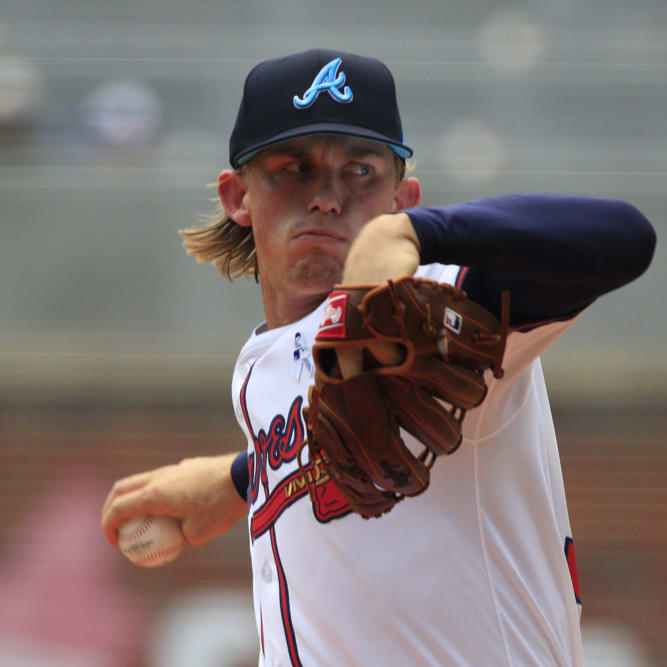For the third year in a row, I will be going division by division, providing analysis on every fantasy-relevant prospect in baseball while also ranking those prospects in their respective systems. This means there will be 20-plus prospects ranked in certain systems and less than 10 prospects ranked in others. There is no point in listing an irrelevant prospect just to reach an arbitrary total of 10, 20 or 30. Similarly, it is unfortunate to not include information on highly relevant prospects just because that prospect was not one of his team's 10 or 20 best.
The sixth and final installment takes us to the 112 prospects you need to know in the National League West.
I wrote the outlooks for most of the guys in the top 250 or so of the top 400 prospect rankings, so if you want more in depth analysis on someone, check out their player profile. Feel free to ask me any prospect-related questions in the comments section or on Twitter.
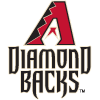 DIAMONDBACKS
DIAMONDBACKS
This may not quite be a top-10 system (it's close), but it's a very fun system up top. The top two guys are well known at this point because the hype machine has rightfully ratcheted up all offseason. While not in the class of the top two guys, Geraldo Perdomo makes for a very exciting No. 3 prospect, both for real life and fantasy purposes. The middle of the list is strong but things really fall off outside the top 10.
For the third year in a row, I will be going division by division, providing analysis on every fantasy-relevant prospect in baseball while also ranking those prospects in their respective systems. This means there will be 20-plus prospects ranked in certain systems and less than 10 prospects ranked in others. There is no point in listing an irrelevant prospect just to reach an arbitrary total of 10, 20 or 30. Similarly, it is unfortunate to not include information on highly relevant prospects just because that prospect was not one of his team's 10 or 20 best.
The sixth and final installment takes us to the 112 prospects you need to know in the National League West.
I wrote the outlooks for most of the guys in the top 250 or so of the top 400 prospect rankings, so if you want more in depth analysis on someone, check out their player profile. Feel free to ask me any prospect-related questions in the comments section or on Twitter.
 DIAMONDBACKS
DIAMONDBACKS
This may not quite be a top-10 system (it's close), but it's a very fun system up top. The top two guys are well known at this point because the hype machine has rightfully ratcheted up all offseason. While not in the class of the top two guys, Geraldo Perdomo makes for a very exciting No. 3 prospect, both for real life and fantasy purposes. The middle of the list is strong but things really fall off outside the top 10. This new Diamondbacks regime has crushed it on the international market and is coming off a strong draft, despite not signing its No. 1 pick, Matt McLain. Things are pointing up long term.
1. Kristian Robinson, OF, 18, Low-A
My guy @Dbacks OF prospect Kristian Robinson (@krobbie_242 ) with a killer pro debut. 3-5 with a SB. The speed caught me off guard. Reminded me of Estevan Florial 💨, Approach at the plate is 💪. Here are those hits #ProspectOnepic.twitter.com/76sagntzHm
— The Welsh (@IsItTheWelsh) June 19, 2018
The No. 2 fantasy asset from the 2017 J-2 class (behind Wander Franco), Robinson will play his entire 2019 season as an 18-year-old. He has huge raw power and above-average speed. If he hits for a high average, he'll be a star.
2. Jazz Chisholm, SS, 21, Double-A
Hardest-hit ball of the night so far: This 111.1 mph double by @Dbacks No. 3 prospect Jazz Chisholm, who has hit in all 8 of the @MLBazFallLeague games he's played, including 5 multi-hit efforts. Batting .441 with 3 homers.Watch live: https://t.co/i9OkHFUQDgpic.twitter.com/3aCxFfBZ4R
— MLB Pipeline (@MLBPipeline) November 11, 2018
Chisholm's strikeouts may scare some away, but his batted ball profile is elite and he has the power to hit 30-plus homers and the speed to steal 20-plus bases. If he hits for a decent average at all, that's a fantasy stud. This might end up being what Trevor Story would look like without Coors Field.
#Dbacks No. 3 prospect Jazz Chisholm is hitting .417 with 3 homers, 6 steals and 5 multi-hit efforts in 8 @MLBazFallLeague games, and he's also looking very, very smooth at short. pic.twitter.com/O7MUzPFrVn
— MLB Pipeline (@MLBPipeline) November 11, 2018
3. Geraldo Perdomo, SS, 19, Low-A
Some guys are cut from a different cloth.And then there's Geraldo Perdomo.After falling behind 7-2, we now lead 9-7!#AllHoppedUp#BringTheEpic.twitter.com/yCK3KYqji4
— Hillsboro Hops (@HillsboroHops) September 3, 2018
Perdomo popped up late enough in the season that he may still be unowned in some dynasty leagues this offseason. He has a chance to be a 20/20 shortstop, but his hit tool will be what carries him to an everyday role. His stock could explode with a good full-season debut.
4. Daulton Varsho, C/OF/2B, 22, Double-A
There's a chance Varsho could develop into a 20/20 catcher who finishes near the top of the position in plate appearances, as he has the potential to handle other positions too. However, there's a long way to go before we bank on that. His ability to hit and hit for power at Double-A will be telling.
5. Jon Duplantier, RHP, 24, Triple-A
Perhaps I am dinging Duplantier too much for his durability issues dating back to his days at Rice. His control at Double-A was also pretty shaky for a pitcher his age. There is No. 2 starter upside if everything goes perfectly over the next few years, but it's much more likely that he is a low-innings starter or lights-out reliever.
6. Alek Thomas, OF, 18, Low-A
Thomas is listed at 5-foot-11, 175 pounds, and whether or not that is accurate, he looks incredibly unimposing – think Adam Eaton. That said, he could very well end up developing like Eaton, hitting for a high average, stealing double-digit bases and scoring a ton of runs.
7. Jake McCarthy, OF, 21, High-A
The younger brother of Joe McCarthy, a 1B/OF in the Rays' system, Jake has a chance to develop into a leadoff hitter with good plate skills and 20-plus-steal speed. As with most hitters who go through Virginia, he struggles to get to notable power in games.
8. Taylor Widener, RHP, 24, Triple-A
The phrased "scouting the stat line" is often overused and used derisively when it shouldn't be, but Widener is a perfect example of why scouting the stat line can be dangerous. He does not have a plus secondary pitch but has a plus fastball and great pitchability. Those traits work well against minor-league hitters, but locating a low-to-mid-90s fastball hardly makes you special in the big leagues. Unless one of his secondaries takes a jump up, his upside is likely capped as a No. 4 starter.
9. Andy Young, 2B, 24, Triple-A
Young was the third piece that Arizona got from St. Louis in the Paul Goldschmidt trade. He certainly wasn't a "throw in" – last year he logged a 137 wRC+ at High-A and a 160 wRC+ at Double-A. That said, he is older (turns 25 in May) than the typical prospect with zero experience above Double-A, so he needs to continue to rake, particularly since he is limited to second base.
10. Blaze Alexander, SS, 19, Low-A
Alexander has a lot of pedigree and obviously put up impressive numbers after the Diamondbacks drafted him in the 11th round. That said, he only received a $500,000 bonus, and if teams were confident he would hit enough to play every day, he would have come off the board much earlier and would have been given a seven-figure bonus. He is extremely pull heavy, and there's a chance he gets figured out before he even gets to Double-A.
11. Jamie Westbrook, OF, 23, Triple-A
An advanced-stats darling from a few years ago, Westbrook got figured out, switched from second base to left field, and then last year made a swing change that allowed him to all of a sudden get to notable in-game power. Given his defensive limitations, it will be a challenge for him to carve out a role, but last year's performance was impressive enough to keep him on the radar for 2019.
12. Buddy Kennedy, 3B, 20, Low-A
Kennedy's claim to fame is that he has worked out with Mike Trout (they went to the same high school). He can also hit – sporting excellent plate skills and a .327/.396/.465 slash line in the Pioneer League. All of that is exciting, but he is not a great athlete or defender at third base, and we're waiting on the power. He may just hit enough to make it all work.
13. Alvin Guzman, OF, 17, Dominican Summer League
Arizona gave Guzman $1.85 million on July 2, 2018. At the time of signing, he had an ideal frame (6-foot-1, 166 pounds) for his age. This should allow him to maintain plus speed as he moves up the ranks. He has plus bat speed, which could lead to plus power. Guzman won't be a particularly fast mover, likely not making his stateside debut until 2020, but he has more upside than every player outside of the top three on this list.
14. Luis Frias, RHP, 20, Low-A
With a 6-foot-3, 180-pound frame and a fastball that can touch triple digits, Frias is much more exciting than most of the guys on the back half of this list. Obviously there are warts, otherwise he'd be much more well known. You guessed it: he needs to work on his changeup and his command.
15. Domingo Leyba, 2B/SS, 23, Triple-A
Most teams have a middle-infield prospect with interesting tools who probably doesn't have enough glove/arm for shortstop and may not do enough with the bat to play everyday at second base – Leyba is Arizona's version of this player. He has a chance to develop a plus hit tool, which, coupled with plus defense at second base, could afford him playing time.
16. Emilio Vargas, RHP, 22, Double-A
Vargas has good size (6-foot-3, 200 pounds) and dominated at High-A last year before a middling six-start run at Double-A. He needs to improve his secondary pitches and his command in order to reach his ceiling as a mid-rotation starter.
17. Pavin Smith, 1B, 23, Double-A
Being concerned about Smith's power output after he signed was controversial enough that I dedicated an entire article to him a couple years ago. The fact that he was a league-average hitter after jumping from short-season to High-A is a glass-half-full account of his 2018 season, but he had a .137 ISO as a high-pedigree 22-year-old first baseman in the Cal League, so I don't think he's rosterable right now in most formats.
18. Andy Yerzy, C, 20, Low-A
Yerzy's above average-power and defensive home make him relevant. However, he still has work to do behind the plate and he is not remotely close to the caliber of hitter that his minor-league numbers indicate.
19. Marcus Wilson, OF, 22, High-A
Wilson hit a bit of a wall last year at High-A. At 6-foot-3, 180 pounds, he looks the part of a toolsy outfielder, but the production needs to be there, especially given his age and the fact that he will probably end up in left field. It would not be surprising for him to have success in a return to the Cal League and then struggle after a promotion to Double-A.
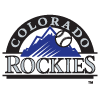 ROCKIES
ROCKIES
This is the most unique farm system in the minors and figures to remain that way for the foreseeable future. First, the Rockies go after a certain type of player in the draft – college players with low ceilings and high floors, with a few notable exceptions. They also value having winning teams in the minors – some teams care about this, others don't. Those two factors result in many of their top prospects being old for their levels. The Rockies do not have a GCL or AZL affiliate, so their top teenagers often spend a couple years in the DSL, resulting in outlandish statistical production. This organization gives all of its players the green light on the bases, so you will sometimes see gaudy stolen-base totals from players who won't be threats on the bases at all in the big leagues. To cap it off, almost every level of the Rockies' minor-league system is a hitter's haven – Double-A Hartford is a pretty fair park, but you will see inflated numbers in the short-season leagues, Low-A, High-A and Triple-A. This is all incredibly important to remember when evaluating the statistical output of these prospects.
1. Garrett Hampson, 2B/SS/OF, 24, MLB
It's always wise to be skeptical of the Rockies giving their young players opportunities. Raimel Tapia and David Dahl were always better options than Gerardo Parra (0.0 fWAR) last year and Ryan McMahon couldn't have been worse than Ian Desmond (-0.7 fWAR) was in 2018, yet the Rockies leaned on their veterans for much of the season. Hampson is ready for everyday at-bats at second base, and is seemingly only competing with another young player in McMahon, so we can proceed with cautious optimism for now. It should not surprise anyone if he hits .300 and steals 30 bases, but there are obviously plenty of realistic outcomes that would make him a "bust" inside the top 200.
2. Brendan Rodgers, 2B, 22, Triple-A
I think most people are starting to realize what Rodgers is. He is a second baseman with plus raw power and several flaws that probably aren't going away. I would project a .240 AVG and .255 OBP in a typical park, but in Coors that may be .270 and .290, respectively. If he ever gets traded (he should have been traded a couple years ago), that would be a crippling blow for those who have him in dynasty leagues.
3. Tyler Nevin, 1B, 21, Double-A
Tyler Nevin absolutely *destroyed* this pitch over the batter's eye in center #Rockiespic.twitter.com/TFHwD3CfHP
— Wilson Karaman (@vocaljavelins) April 8, 2018
There's really nothing not to like with Nevin, except the fact he has missed time with a variety of injuries over the past three years. It's the dreaded R/R first base profile, but he could be a plus hitter with average-to-plus power, and in Coors, that would make him an absolute monster.
4. Colton Welker, 3B/1B, 21, Double-A
Colton Welker real quick inside here, cleans out an elevated 30 FB w/ serious carry deep into the night. Welcome to Lancaster buddy #Rockiespic.twitter.com/3OAo4dv6RI
— Wilson Karaman (@vocaljavelins) April 6, 2018
Welker's fantasy value is very dependent on him playing his home games in Coors Field and his defense being good enough for him to play everyday. If those two things happen, he could put up prime Daniel Murphy numbers. The Nolan Arenado extension doesn't necessarily mean Welker has no chance to play everyday with the Rockies, but it will now have to be at first base. If he gets traded, he could still hit around .280 someday in a neutral park, but then the power would really have to come.
5. Grant Lavigne, 1B, 19, Low-A
2018 N.H. 1B/3B Grant Lavigne had a big game yesterday in front of a few decision-makers. 3-3 w/ 2 HR and a double. Here's one of the HRs. Lavigne is a @WakeBaseball commit: #MLBDraftpic.twitter.com/OZO3yUEAOk
— Carlos Collazo (@CarlosACollazo) May 2, 2018
After his monster statistical debut, Lavigne has become one of the most overrated prospects from the 2018 draft. He has big raw power, but really took advantage of the hitter-friendly Pioneer League. Throw his steals out. This is still a risky profile given his age and defensive limitations. Of course, his value probably won't dip anytime soon, as he will be playing in extreme hitter's parks at Low-A and High-A.
6. Ryan Vilade, 3B, 20, High-A
Vilade has not been officially moved off shortstop, but he will be at some point in the coming years. All of the concerns about the organizational depth chart that apply to the players above him apply to Vilade and then some, as he is a lesser prospect. He is a little too happy to dump the ball into right field and could benefit from trying to do more damage.
7. Sam Hilliard, OF, 25, Double-A
COL Rockies OF Sam Hilliard - Knees bent with wideish base stance, hands pull back and stay behind body through approach. Bat over head at slot, some bat wrap. Big leg kick. Can scoop it low. pic.twitter.com/t3h9V9ZtDK
— Prospects Live (@ProspectsLive) October 30, 2018
Even as a converted pitcher, Hilliard is too old to likely be making a return trip to Double-A. That said, he has the type of tools we really care about in a player who could someday call Coors Field home. He has plus speed, above-average power and the defensive chops to be plus in right field. It is tough to break in with this team, but if Hilliard ever gets a fair crack, look out.
8. Eddy Diaz, 2B/SS, 19, Pioneer League
Diaz has spent the last two years compiling very enticing numbers (84 steals in 87 games) in the DSL, but as we know, those numbers often don't translate when players come stateside. He will be playing in hitter-friendly environments over the next few years, so it is certainly possible that he continues to hit and build up his stock. Just be careful not to overvalue a 5-foot-11 second baseman who has never faced advanced pitching.
9. Ryan Rolison, LHP, 21, Low-A
The Rockies selected Rolison with the 22nd overall pick in the 2018 draft and he received the full slot value ($2.9123 million). He is more of a sum-of-the-parts starting pitcher, not relying on any one great pitch. As a lefty, he just needs to continue to refine his pitches and throw strikes to make it as a No. 4 starter.
10. Terrin Vavra, 2B, 21, Low-A
Vavra is a "gamer" shortstop who will likely end up at second base. He received $550,000 in the third round last year out of the University of Minnesota, which is not necessarily a hotbed of MLB talent – I should know. Vavra doesn't have any standout tools, but he is pretty good at everything. I expect him to put up really impressive numbers at Low-A and High-A that will oversell his raw talent.
11. Peter Lambert, RHP, 21, Triple-A
I don't make a habit of looking at rankings on other sites, but I know that Lambert has been ranked highly elsewhere while I've never considered including him in my top 400. Perhaps I will come to regret that, but as a Rockies starting pitcher with a mid-rotation ceiling and underwhelming strikeout totals in the minors, I struggle to see how ignoring him will come back to bite me. Counterpoint: I would have said the same about Kyle Freeland a couple years ago.
12. Ryan Feltner, RHP, 22, Low-A
The recipient of a $434,700 bonus after the Rockies snagged him in the fourth round of the 2018 draft, Feltner will face a fair test this year pitching at the hitter-friendly park in Asheville. He has good size (6-foot-4, 190 pounds), a mid-90s fastball and two developing secondary pitches.
13. Riley Pint, RHP, 21, Low-A
Pint was bad in 2017 and injured (forearm tightness) for most of 2018. When I talk about the importance of churning minor-league roster spots in-season, Pint is a prime example. If he is still rostered in your league, that either means you are in a ridiculously deep league, or his owner isn't paying attention/doesn't care.
14. Josh Fuentes, 1B/3B, 26, Triple-A
If we're worried about the Rockies blocking guys like Hampson or Welker, then we have to assume Fuentes will never get a real look in the big leagues. A likely Quadruple-A hitter with power, contact skills and little patience, Fuentes would have value if he was ever getting consistent playing time in Coors Field.
15. Yonathan Daza, OF, 25, Triple-A
A likely fourth outfielder, Daza has enough speed to be useful in deeper leagues, but he is too far down the organizational depth chart to be worth rostering in most formats.
16. Niko Decolati, OF, 21, Low-A
Decolati received a small six-figure bonus after getting selected in the sixth round last year, and as a college pick, predictably hit in the Pioneer League. He has plus speed and should continue to put up impressive numbers at Low-A and High-A before facing a true test at Hartford.
17. Bret Boswell, 2B, 24, Double-A
Boswell has impressive pop for a second baseman, but he turns 25 in October and will likely spend the whole year at Double-A, so you can be forgiven for not getting too excited.
18. Rico Garcia, RHP, 22, Triple-A
Garcia is undersized (5-foot-11, 190 pounds) but has a starter's pitch mix, headlined by a low-90s fastball. He excelled at Double-A and could get spot starts in the majors as early as this season.
19. Justin Lawrence, RHP, 24, Double-A
Lawrence was the best reliever in the Arizona Fall League (unless we want to count starters with futures in the bullpen, like Darwinzon Hernandez). He can touch triple digits with a sidearm delivery and should be able to eventually thrive in the late innings.
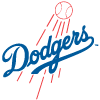 DODGERS
DODGERS
It seems to be an annual tradition, where I lament in June or July how the Dodgers' farm system has fallen off, and then I take inventory of it in the offseason and am surprised to find that it is much deeper than I expected. They aren't quite the Astros, but they are always turning out quality under-the-radar pitching prospects, thanks largely to their trailblazing work with weighted-ball programs. Redraft players often complain about the way the Dodgers use starting pitchers, often limiting their innings relative to what happens in a typical big-league rotation. I think the same can be said of the way they handle their middling position players. For instance, everyone knows Alex Verdugo is big-league ready and that he will spend a good chunk of the season on the major-league roster, but he may only play a few days a week. This means that you have to be a Cody Bellinger/Corey Seager level player to be assured regular work.
1. Gavin Lux, 2B/SS, 21, Double-A
The swing on this ... 👀#Dodgers No. 6 prospect Gavin Lux, the shortstop on our Pipeline Team of the Year, ripped this two-run shot as part of a big day that helped the @TulsaDrillers advance to the Texas League finals:https://t.co/00jlzSuPzipic.twitter.com/puWXicHrlD
— MLB Pipeline (@MLBPipeline) September 10, 2018
A swing changed geared to get the ball in the air more often unlocked another level for Lux in 2018, and he now profiles as a potential five-category second baseman. He is a good athlete with the wheels to steal 15 bases and enough power to bang out 20 home runs. Look for him to return to Double-A briefly before spending most of the year at Triple-A. He should debut in early 2020.
High-A lifer relief arm, meet Gavin Lux#dodgerspic.twitter.com/wdPLVl46Qd
— Wilson Karaman (@vocaljavelins) May 26, 2018
2. Keibert Ruiz, C, 20, Triple-A
#Dodgers No. 2 prospect Keibert Ruiz hit this 💣with the @TulsaDrillers last night, finishing 2-for-3. This was the No. 37 overall prospect's third homer in as many games. More: https://t.co/3R34hziS7spic.twitter.com/aiJQE6T07R
— MLB Pipeline (@MLBPipeline) August 18, 2018
Somehow the closer Ruiz gets to the majors, the more underrated he becomes. Catchers almost never spend their age-19/20 seasons at Double-A. But Ruiz did and was a league-average hitter. He could hit .280 with 15-plus homers and should debut in early 2020.
3. Alex Verdugo, OF, 22, MLB
The news is constantly threatening Verdugo's fantasy value. First, we were encouraged after Yasiel Puig and Matt Kemp were shipped to Cincinnati. Then, we were worried after the Dodgers signed A.J. Pollock. If they were to sign Bryce Harper to a short-term deal, Verdugo could be crossed off mixed-league draft boards. He has a good hit tool and would probably develop 20-homer pop if he were ever given an everyday role.
4. Dustin May, RHP, 21, Double-A
Dustin May 94-7, wicked finishing SL at 83 to whiff Jo Adell here in the first #Dodgers#Angelspic.twitter.com/0uNq2wIbqe
— Wilson Karaman (@vocaljavelins) May 26, 2018
May is a spin-rate darling, so much so that some who have access to that data project him to be much better than a No. 3 starter. I don't quite see frontline upside at this point, but I could certainly be wrong about that. He has a plus fastball, plus slider and useful changeup and cutter. May is excellent at generating weak contact, which makes him a slightly better real-life prospect. He should spend most of 2020 in the big leagues.
5. Jeter Downs, 2B/SS, 20, High-A
Jeter Downs last night: Dragons last at-bat of game one and first at-bat of game two. pic.twitter.com/FQSGYQgXG1
— Dayton Dragons (@DragonsBaseball) May 23, 2018
The best thing that can be said about Downs is that he has a high likelihood (given his age) of developing into an everyday middle infielder who steals 20-plus bases annually. The average could settle anywhere from .240 to .280, depending on whether he sells out for power.
6. Tony Gonsolin, RHP, 24, Triple-A
Tony Gonsolin on in relief. pic.twitter.com/7cWxKWgv6W
— Clyle Alt (@clylealt) February 25, 2019
Gonsolin can touch 100 mph, although not necessarily as a true starting pitcher. Regardless, his fastball is a monster pitch even when he's in the mid-90s. He also has a potentially plus curveball and a couple other useful pitches, giving him No. 3 starter upside without any significant improvements between now and when he reaches the majors.
7. Dennis Santana, RHP, 22, Triple-A
Most slider swings and misses in one game in Denver, 2017-2018T1: Gray, Greinke, Barria (!): 10T4: Gray, Kershaw, Dennis Santana: 9A breakdown of Santana's debut: https://t.co/yjEccn958spic.twitter.com/ENKBVTWcf6
— Daniel Brim (@DanielBrim) June 3, 2018
A rotator cuff strain put an end to what could have been a breakout 2018 season for Santana (he had just been summoned to the majors). Look for him to spend much of the first half back at Triple-A, but if he is healthy and pitching up to his potential, he could get spot starts in the majors this summer. The Dodgers' depth may eventually force him to the bullpen where his fastball/slider combo could be disgusting.
8. Edwin Rios, 1B/3B, 24, Triple-A
If Verdugo needs a trade, Rios certainly does as well. A first baseman who has played third base but doesn't really profile there for a contending big-league club, Rios has huge raw power but saw his strikeout rate spike in a return to Triple-A. He would immediately become interesting if he was thrust into a prominent role – he is a much better prospect than someone like Rowdy Tellez, for instance.
9. Miguel Vargas, 1B/3B, 19, Low-A
Vargas has a chance to be a 60- or 70-grade hitter with plus power, which would allow his bat to play at the bottom of the defensive spectrum. Of course, if he falls short of that, his projected below-average defense at third base could bar him from getting playing time.
10. Diego Cartaya, C, 17, AZL
The best catcher in a catcher-heavy 2018 J-2 class, Cartaya has all the characteristics you'd like to see at his position in a 17-year-old. He will stick behind the plate and is expected to hit for average and power. That said, catching prospects that age are incredibly volatile. He may go to the DSL, but I could also see the Dodgers challenging him with an assignment to the AZL.
11. Zach Willeman, RHP, 23, High-A
Willeman underwent Tommy John surgery in the spring of 2017, which is why he only has 19 pro innings under his belt. His fastball was even better when he returned from the recovery process, and it is now a monster pitch that can touch 99 mph. He has a chance to develop a couple plus secondary pitches so he could be a massive riser this year.
12. Josiah Gray, RHP, 21, Low-A
Shipped to the Dodgers along with Downs as part of the December blockbuster with the Reds, Gray was a great find with the No. 72 pick in the 2018 draft. He only received a six-figure bonus, but was immediately flashing mid-rotation upside after signing. The fact that the Dodgers targeted him in that trade is encouraging.
13. Carlos Rincon, OF, 21, Double-A
Rincon hit 15 home runs in 29 games at High-A last year. That resulted in a .491 ISO and a .818 SLG. Even with that outlandish production, he still isn't a top-400 prospect. He doesn't really have a defensive home, he's just a masher. Josh Naylor, for instance, is probably a better athlete than Rincon. We'll see where it goes – maybe in a couple years he'll be raking as a DH in the American League, or perhaps the Dodgers will hold him in hopes of someday getting the DH in the NL.
14. Julian Smith, LHP, 21, Low-A
A 15th-round selection last year, Smith received $152,5000 despite undergoing Tommy John surgery in 2017. He returned for instructs this past fall, showing off a low-90s fastball and potentially plus curveball and solid changeup. The Dodgers have had past success with pitchers of this ilk, and if Smith gets off to a good start in his pro debut, he will be worth snatching up in deeper leagues.
15. Mitchell White, RHP, 24, Triple-A
White's stock slid quite a bit last year due to injuries and inconsistency. He can still flash No. 3 starter upside, and perhaps a full, healthy season at Triple-A will allow him to re-establish his dynasty-league value.
16. Will Smith, C, 24, Triple-A
Smith is a pretty classic better-in-reality-than-fantasy catching prospect, but I ding him even more than a player like Sean Murphy because I don't know when Smith will ever be the primary option for the Dodgers. Austin Barnes will be a superior option in 2019 and Ruiz will be ready by 2020.
17. Michael Grove, 22, Low-A
Another TJS reclamation project, Grove was popped by the Dodgers with the No. 68 overall pick despite the fact he was recovering from surgery. When healthy, he had a very live arm, boasting a plus fastball and plus slider. If his stuff returns this year and he can improve his changeup, he could be a big riser.
18. DJ Peters, OF, 23, Triple-A
It's tough to be patient with Peters at this point. He is destined for an outfield corner, so he will need to hit a lot to play every day. He should be able to do damage against lefties, but it's hard to see him making enough contact to get on base at an acceptable clip against same-handed pitchers. If he ever does settle in on the short side of a platoon, he will be a fun DFS player with little season-long appeal.
19. Cristian Santana, 3B/1B/OF, 22, Double-A
Santana is pretty fun, but highly unlikely to amount to anything. He is extremely productive for a player who almost never walks, thanks to really impressive all-fields power. The fact that he isn't a lock to stick at third base, despite a 70-grade arm, also hurts his chances of ever being an everyday player.
20. Gerardo Carrillo, RHP, 20, High-A
Carrillo is really undersized – Zach Davies level undersized – but he knows how to pitch and has quality stuff. He will work on maintaining his stuff deeper into starts and proving he can hold up over a full season.
21. Jacob Amaya, SS, 20, Low-A
A bet on Amaya is a bet on a player who will stick at shortstop and has an impeccable handle on the strike zone. He needs to work on getting to at least double-digit power to be more than a high-end bench piece.
22. Jeren Kendall, OF, 23, High-A
This is an exaggeration, but only slightly: my comp on Kendall is Michael Jordan. He is an elite athlete who effortlessly patrols center field and excels on the bases. He just can't hit. His infield flyball rate has been well north of 30 percent at every level. Just based on pedigree and tools, I'm leaving him on for one more year.
23. Yadier Alvarez, RHP, 23, Double-A
Alvarez is on here simply because he still has lights-out stuff. He just has no idea where it's going and also has some makeup issues. Maybe he'll eventually develop into a closer – that's the hope.
24. Connor Wong, C, 22, Double-A
Wong would be the top catching prospect in some organizations, but here he is quite a ways down the organizational depth chart. He is a lot like Smith, in the fact that he can chip in some speed on the bases while getting to average game power.
25. Cody Thomas, OF, 24, Double-A
Thomas is not too different from Peters and Santana – a corner bat with big raw power and a sketchy hit tool. He was a two-sport guy until recently, which is why he is a little older than the typical raw player heading to Double-A.
26. Omar Estevez, 2B/SS, 21, Double-A
A hit tool second baseman with a very small margin for error, Estevez seems likely to be limited to a bench role, but if he continues to hit a ton, he could beat that projection.
 PADRES
PADRES
This is the best system in baseball, although I will note that the Rays got one more prospect (37 total) included in their write up than San Diego has here. The Padres are loaded with infielders, outfielders, designated hitters, corner bats, slick fielders, high-end starting pitchers, mid-rotation arms, and they have the best relief pitching prospect in baseball to boot. They do pretty good in the draft, but where they really crush it is in trades and on the international market. Part of the reason I think they should have traded for Noah Syndergaard is that they're quickly running out of ways to improve the projected 2020 roster, given all their depth. That depth makes it very tricky to evaluate position players on the big-league roster and on the farm, as very few players are truly guaranteed a full-time gig.
1. Fernando Tatis Jr., SS, 20, Triple-A
Fernando @tatis_jr's first #PadresST homer of 2019 was SMOKED 😱 pic.twitter.com/Bm8rxRKnrA
— San Diego Padres (@Padres) February 26, 2019
Tatis is going to be really awesome, I just don't think it's going to happen overnight. I maintain that he is being completely overdrafted in redraft leagues – I wouldn't even take him as a bench piece in a 15-team mixed league with a seven-man bench. The "When will Tatis be up?" question has a pretty simple answer: whenever the Padres think he's ready for the challenge. There is no set timetable. It could be April, it could be July.
2. Luis Urias, 2B/SS, 21, MLB
Hey #Padres fans,Remember when Luis Urias did this is the @MLBazFallLeague last year? pic.twitter.com/tgMwD05w0e
— Emily Waldon (@EmilyCWaldon) September 24, 2018
While every other notable close-to-the-majors prospect seems to be getting pushed up boards, Urias remains an excellent value in redraft leagues. Ian Kinsler will play second base, Urias will play shortstop, and when Tatis comes up, Kinsler will shift to a bench role. The big question is, will Urias be given the chance to lead off this season? I think he will eventually play his way into that role, even if he opens the year further down the lineup.
3. MacKenzie Gore, LHP, 20, High-A
MacKenzie Gore 3rd Strikeout pic.twitter.com/VEt9qT3mkU
— Josh (@purpl3m) August 20, 2018
Gore is a stud who is better than his numbers at Low-A indicate. He is going to be on a very fast track, likely opening at High-A and possibly finishing the year at Triple-A. He has frontline upside and is a very key part of this rebuild.
4. Chris Paddack, RHP, 23, Triple-A
Chris Paddack with another spotted fastball to catch Jesus Aguilar looking for his 2nd strikeout of the game.His fastball...🤤 pic.twitter.com/VR6Ga4zeM7
— Pitcher List (@PitcherList) February 26, 2019
People in the redraft community seem to be rushing to claim Paddack as their own. Of course, we've known about him for a long time, but I never thought the hype would quite get to this point before he reached Triple-A. Paddack may have the best changeup in the minors. He also has plus command of a low-90s fastball. That pitch plays up thanks to the extension the 6-foot-4 righty generates. If he can improve his breaking ball, he could be a frontline starter. He'll probably pitch more innings in the majors than the minors this year.
5. Xavier Edwards, SS/2B, 19, Low-A
Here's @Padres pick Xavier Edwards. Watch him fly pic.twitter.com/7EAZF4qJNb
— Michael Lananna (@mlananna) June 5, 2018
Edwards could hit .300, get on base at a .400 clip and steal over 50 bases in his peak seasons, which makes him a top-five dynasty-league target from last year's draft class. He will likely need a swing and/or approach change to hit for notable power.
6. Hudson Potts, 3B/1B, 20, Double-A
Hudson Potts puts this one way up top! 💥#PadresOnDeck | #PadresSTpic.twitter.com/ijAFgiLjg0
— San Diego Padres (@Padres) March 21, 2018
For a player who may get to Triple-A in his age-20 season, Potts isn't particularly exciting, as I think I know exactly what he is. He is going to hit for power (25-plus HR) and he is going to swing and miss quite a bit. Ideally he would get traded to a team with less depth.
7. Luis Patino, RHP, 19, High-A
Another look at the cut on #Padres Luis Patiño's fastball on Sunday.He touched 98 and 99 MPH, sitting 95-97 comfortably.All of 18-years-old. #PadresOnDeckpic.twitter.com/GU9UfmGRcF
— Emily Waldon (@EmilyCWaldon) August 14, 2018
There are those who immediately ding a six-foot righty, but when a pitcher has Patino's stuff, they can have success in the rotation at 5-foot-9. Ok, maybe that's a stretch, but I'm not worried at all about his height. If he stays healthy, he could be a No. 2 starter in the big leagues in 2021.
8. Adrian Morejon, LHP, 20, Double-A
I was too low on Morejon last offseason. While I no longer have doubts about his stuff playing near the top of a rotation, durability concerns persist. If he gets up over 100 innings this season without fading down the stretch, he will be poised to spend most of 2020 in the majors.
9. Logan Allen, LHP, 21, Triple-A
There is nothing particularly exciting about Allen, but he's definitely a starter, he should debut in the first half, and he has mid-rotation upside. The fact he gets a little overshadowed in this system should lead to him being a FAAB bargain in redraft leagues.
10. Francisco Mejia, C, 23, MLB
The gulf between Austin Hedges' defense and Mejia's defense is like the gulf between Bryan Mitchell's talent and Paddack's talent. That's really not an over-exaggeration. This is the biggest knock on Mejia for fantasy – his playing time is firmly capped.
11. Esteury Ruiz, 2B, 20, High-A
Ruiz is overvalued in some circles because people look at his stolen-base total at Low-A and think it's a sign of things to come. He could absolutely go 20/20 with a .250 AVG, but he'll need an everyday job and for that he will likely eventually need a trade.
12. Tirso Ornelas, OF, 19, High-A
2-out RBI base knock by Tirso Ornelas extends the lead to 5-1! #PadresOnDeckpic.twitter.com/Cn82qbDXCV
— San Diego Padres (@Padres) October 1, 2017
Ornelas' was quietly one of the best pure hitters in the Midwest League last year. He makes a ton of contact, takes his walks and uses the whole field. I expect him to eventually be a 25-plus homer threat, given his size, but the batting average upside is the big draw.
13. Anderson Espinoza, RHP, 21, High-A
Espinoza (late 2017 Tommy John surgery) was not ready to pitch in fall instructs, but should be ready for High-A in May. He is a very difficult rank. If he shoves early this season, his stock will soar, but he was not close to a finished product when he got hurt, so he could just as easily struggle as he knocks off some rust.
14. Andres Munoz, RHP, 20, Triple-A
Munoz is the best relief-pitching prospect in baseball, I don't think that's very debatable. He has one of the best fastballs on the planet and could be the Padres best reliever as early as this summer. His velocity (103 mph) at such a young age is a bigger risk factor than his lack of experience.
15. Gabriel Arias, SS, 19, High-A
Arias has had a couple brief runs of excellence as a pro – one as a 17-year-old in the Australian Baseball League last winter and one over the final two months of the season as the youngest player in the Midwest League. Given his age and pedigree, it's possible those runs are signs of things to come.
16. Ryan Weathers, LHP, 19, High-A
The Padres REALLY liked Weathers – giving him full slot value ($5.2265 million) after selecting him with the No. 7 overall pick (I assumed when they drafted him that there was an under-slot deal in place). He is very polished (bloodlines help) for a prep pitcher and could be on the same aggressive track as Gore, although I think his upside is capped as a No. 3 starter.
17. Tucupita Marcano, 2B, 19, Low-A
Marcano gives off a super-utility vibe, given his narrow frame (6-foot, 165 pounds) and below-average power. However, there's a chance he will just hit too much to be left on the bench. If that happens, he could hit .310 with 25-plus steals while leading off.
18. Josh Naylor, 1B/OF, 21, Triple-A
What do you do with a player who could probably hit .285 with 20-25 HR in the majors while playing well below-average defense in left field? Well, no team will be satisfied with that production. Perhaps a trade to the American League would allow him to play first base or DH.
19. Michel Baez, RHP, 23, Double-A
When Baez lost his fastball command and sometimes his velocity last season, he struggled to live up to expectations. At his best, his fastball is still a monster, but his slider and changeup are only 50- to 55-grade offerings. I'm starting to think he will end up in the bullpen.
20. Jeisson Rosario, OF, 19, High-A
Rosario is one of the best athletes in this system, which is saying a lot. It is also quite the testament to how good this system is that Rosario is this far down the list. He will likely be trade bait at some point, but could eventually provide Ender Inciarte-esque fantasy production.
21. Austin Allen, C/1B, 25, Triple-A
Allen could be the best offensive catching prospect in the minors. I wouldn't argue too hard against that assertion. However, his defense is so bad that most evaluators think he will eventually need to move to first base or DH.
22. Owen Miller, 3B/2B, 22, High-A
Miller can flat out hit. He hasn't tapped into much power yet, but he will probably develop 15-20 homer pop. He also doesn't walk much, which is something he will have to do to ever crack the Padres' starting lineup, given the names ahead of him on the organizational depth chart. He could finish the year at Double-A or Triple-A.
23. Buddy Reed, OF, 23, Double-A
Reed has elite speed, but he probably won't hit much in the upper levels. However, he had a much better showing in the Arizona Fall League than I anticipated, so perhaps he will continue to surprise me.
24. Ignacio Feliz, RHP, 19, Low-A
Feliz, who was acquired this offseason from Cleveland for Walker Lockett, is very intriguing. The Indians are a smart club, but they already dealt Jhon Torres to the Cardinals in a trade that now looks lopsided in the Cardinals' favor, and Feliz could be the pitching version of Torres. While he is just 6-foot-1, Feliz is projectable and could add velocity in the coming years. He has a potentially plus curveball and potentially plus cutter and could break out this year at Low-A.
25. Reggie Lawson, RHP, 21, Double-A
Lawson has an ideal starter's frame (6-foot-4, 205 pounds) and a mid-90s fastball, which is a great place to start. His secondary stuff is still inconsistent, but he took strides in that department last year. He has mid-rotation upside if he continues with his command gains.
26. Cal Quantrill, RHP, 24, Triple-A
I really don't know what to do with Quantrill. He reminds me a lot of Mark Appel for a variety of reasons, but is so close to the majors, I can't bring myself to completely write him off. Maybe he can be a No. 4 starter sooner than later, but I would bet against that.
27. Joey Cantillo, LHP, 19, Low-A
Cantillo is a 6-foot-4 southpaw with a smooth delivery who has missed a ton of bats early in his career. He was a 16th-round pick in 2017, and doesn't have elite stuff, but has been good at getting groundballs thus far.
28. Ty France, 3B/1B, 24, Triple-A
France was a legit name to consider late in draft-and-hold leagues and in NL-only formats before the Padres signed Manny Machado. He impressed last year in the upper levels, but is probably just a Quadruple-A bat at the end of the day.
29. Pedro Avila, RHP, 22, Double-A
Avila is only 5-foot-11 and a little on the pudgy side, but has a starter's pitch mix and is fairly close to the majors. He will need to really improve his command to eventually crack the big-league rotation, given the plethora of better arms ahead of him on this list.
30. Frank Lopez, RHP, 17, Northwest League
Lopez will probably be sent to the NWL, but I wouldn't be shocked if the Padres aggressively sent him to the Midwest League before his 18th birthday. His is just 6-foot-1, 170 pounds, but has a chance to develop a plus fastball and plus breaking ball. The command and third pitch need work, but he's already way ahead of schedule.
31. Trey Wingenter, RHP, 24, MLB
Wingenter is a high-upside reliever with a big fastball, but considering he is behind Kirby Yates and Andres Munoz on the organizational depth chart, he is probably only going to be valuable for his ratios and strikeouts.
32. Esteban Quiroz, 2B, 27, Triple-A
I almost never rank prospects as old as Quiroz, but he is a little interesting. After he impressed AFL scouts with his hit tool, the Padres sent Colton Brewer to the Red Sox for him in a November trade. Quiroz played in Mexico until 2018, and may not hit for enough power to get a long look in the big leagues.
33. Luis Campusano, C, 20, High-A
Campusano, the 39th overall pick in 2017, will stick behind the dish and has shown good contact skills in the lower levels. He will need to start tapping into more power to become relevant in most leagues.
34. Mason Thompson, RHP, 21, High-A
A high-pedigree third-round pick back in 2016, Thompson has always missed bats at a high clip, but struggles with his command/control, which is not a surprise given his 6-foot-7, 223-pound frame. If the command improves, so will his stock.
35. Edward Olivares, OF, 23, Double-A
The Padres targeted Olivares in the Yangervis Solarte trade with the Blue Jays a year ago, but not everything A.J. Preller touches turns to gold. He has a solid power/speed combo but probably won't hit enough.
36. Jacob Nix, RHP, 23, Triple-A
Nix was a better prospect than Eric Lauer, but Nix was so bad in his big-league debut that he will have to really impress this year in spring training to avoid opening the year at Triple-A. He has likely already been passed over on the organizational depth chart to the point that he is just an up-and-down depth piece.
 GIANTS
GIANTS
This is still a really bad system, primarily because of its lack of depth. There are a few exciting players up top, but most are raw teenagers in the lower levels. The new regime will probably excel at bolstering the farm system, and I expect that to be a priority in the coming years. This system could look significantly better after the draft and after they trade some players this summer.
1. Marco Luciano, SS/OF, 17, AZL
Marco Luciano hit this one about 379ft. Landed on the warning track in left. It was one of a few balls he whacked. He left today's sim game early due to hamstring tightness. pic.twitter.com/TY5t7Rog6T
— Eric Longenhagen (@longenhagen) January 22, 2019
Five of the top eight dynasty-league prospects signed on July 2, and Luciano was the top prospect to sign on July 2, 2018. That doesn't mean he is definitely destined for stardom, but it is reasonable to be aggressive with him. An excellent athlete, Luciano has five-category, power-over-hit upside.
2. Joey Bart, C, 22, High-A
Back-to-back-to-back prospect jacks!Chris Shaw, Joey Bart and Zach Green did some yard work in the #SFGiants' 15-2 #SpringTraining win over the #Royals today.Bart and Shaw are Nos. 1 & 11 on the @SFGiants' 2019 Top 30 Prospects list: https://t.co/BGRCSTU5AKpic.twitter.com/lqmgffoqhV
— MLB Pipeline (@MLBPipeline) February 28, 2019
Even if I'm right and Bart's batting average in short-season ball was a mirage, he only needs to hit .235 or so to be a fantasy stud at the position, given his power and the lack of defensive concerns that could lead to a dip in playing time. That said, he will still get overdrafted in many dynasty leagues.
3. Heliot Ramos, OF, 19, High-A
Ramos could still be a 30-plus homer right fielder who hits .260 or .270, but unfortunately he no longer seems likely to steal more than 10 or 12 bases in his early MLB seasons. I would cash him out this offseason if someone else still sees five-category upside.
4. Alexander Canario, OF, 18, Northwest League
Canario was a sexy dynasty-league name a year ago, but now serves as a cautionary tale for those tripping over themselves to grab DSL guys who have not made their stateside debuts (Julio Rodriguez owners beware). He still has a chance to be a 20/20 guy, but as a R/R corner outfielder, he really needs to hit. Canario started making adjustments at the end of the year in the AZL.
5. Luis Toribio, 3B, 18, AZL
Toribio is this year's version of Canario – coming off a very impressive campaign in the DSL. He had a 62:51 K:BB in 64 games, so while there is some swing and miss, he is patient enough to take his walks. The hope is that he develops into a plus hitter with plus power. His AZL performance should be illuminating.
6. Shaun Anderson, RHP, 24, Triple-A
I wouldn't pay much mind to Anderson if he were still with the Red Sox, but a No. 4 starter for the Giants can sometimes provide No. 3-starter production as long as you sit him in Coors. I love the way he pitches, but he lacks a plus pitch, so the upside is limited.
7. Jairo Pomares, OF, 18, Dominican Summer League
Pomares received just a hair under $1 million on July 2, 2018, as one of the older players in that international signing class. He has a well-rounded toolset and could hit for a high average while providing double-digit homers and steals.
8. Gregory Santos, RHP, 19, Low-A
Most pitchers in this system are more floor than ceiling, while Santos is all ceiling and extremely risky. He has an easy plus fastball that could be a 70-grade pitch in time, and he has a plus slider to go with it. If his changeup improves and he throws enough strikes in his full-season debut, he could finish the year in the top three on this list.
9. Juan De Paula, RHP, 21, Low-A
The Giants acquired De Paula from the Yankees in the Andrew McCutchen trade, and while he didn't stand out in the Yankees' system, he is one of the few notable arms in this weak system. Armed with a mid-90s fastball and a good 6-foot-3, 175-pound frame, he will focus on improving his secondary pitches and command.
10. Chris Shaw, OF/1B, 25, Triple-A
Shaw has the most raw power in this system, but significant contact issues that will probably result in him languishing as a Quadruple-A hitter. His proximity to the big leagues and clear path to playing time keep him relevant, but in most organizations I'd have already completely written him off.
11. Logan Webb, RHP, 22, Double-A
Webb has a plus fastball and plus slider, but his lack of a quality third pitch and shaky command could eventually relegate him to a relief role. However, given his proximity to the big leagues, he's worth keeping a close eye on this year.
12. Sean Hjelle, RHP, 21, High-A
The Giants snagged Hjelle, a 6-foot-11 right-hander, in the second round of last year's draft. His height alone makes him pretty risky, but he has better control than the typical pitcher his size. Unfortunately, his stuff is pretty middling, and he has a realistic ceiling as a No. 4 starter.












